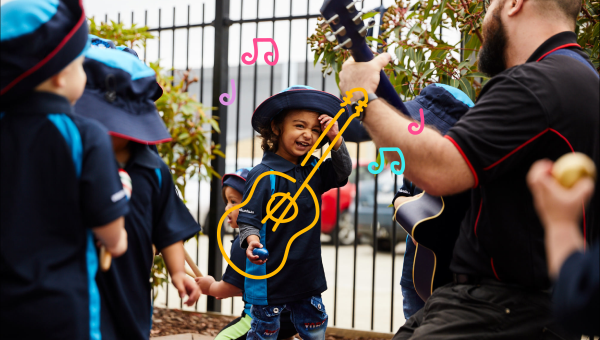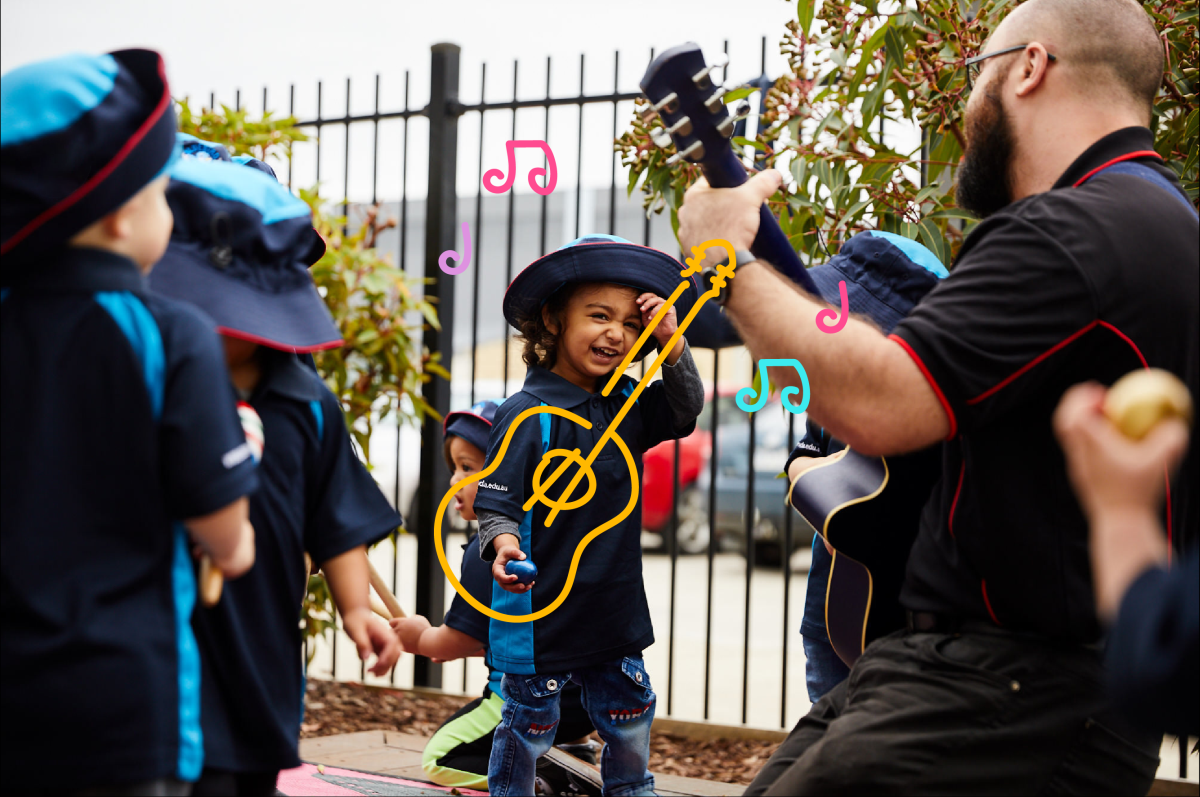
Active Parks: Music And Movement Program
Active Parks Music Program dates for 2025 – 2026 We are happy to announce that Music Beat Kids – the home of Boppin’ Babies –


Toddle is a game-changing child care centre comparison website which allows parents to search, discover and enquire all in one helpful location. In this guest post, Lee Price, Content Editor, Toddle.com.au talks to children’s behavioural play therapist Julia Challenor about ways to incorporate music in to your child’s day.
It’s a natural instinct to sing a lullaby to our children when they’re little as a way of soothing them. But there are even more ways to incorporate music into your children’s day, whatever their age.
Toddle spoke with Julia Challenor, a behavioural play therapist for children. Julia shared all the ways we could be using music as one element in our parenting tool kit.
‘Music is all about connection,’ Julia explains. ‘When we make music with a child, or sing, or listen to music together, we are sharing an experience. That brings us closer together.’
‘Anything can be an instrument,’ says Julia. ‘You can teach a child a lot by asking them to imitate or copy your pattern.’
‘They can bang on glass, metal, wood. You can use your body for percussion, with knee slaps, clapping or stomping feet. And you can’t go past upturned saucepans and wooden spoons,’ she says.
So get into the kitchen and tap out a tune, then ask your child to copy you. You’ll often see children participating in activities such as this at their child care centre. They might sit in a circle with tapping sticks, tambourines or shakers and take turns following the pattern set by the educator.
‘When your little one is a bit wound up and you can see they’re not happy, try a dance off,’ suggests Julia.
‘Just play some songs, with the volume up high, in the living room and have a dance around with your child. It instantly changes the mood and boosts their endorphins. Even a five minute dance party is enough to reset your child for the rest of the afternoon,’ Julia says.
‘Music has a way of bringing children back into their body. When kids are in a bad mood, it can help them to regulate.’
Julia suggests creating a good-mood playlist that you can switch on as needed, rather than hunting around for songs at the time that you need them.
‘Children can use music to help regulate their emotions,’ explains Julia. ‘It can be helpful to provide them with some music to use as a cue at a certain time of day.’
‘So you might play some soothing music after lunch when you want them to have some quiet time, colour in, or do a puzzle.’
Another time many parents successfully incorporate music is at bedtime, as a way to help children wind down after a busy day, says Julia.
‘Find music that makes children relax, as opposed to the exciting music that you’d use for other times of day to build their energy.’
‘You’ll often find that in schools and child care centres, they use music as a cue for the children.’
‘So if it’s time to transition from one activity to another, they might sing the ‘clean up’ song instead of just telling them all to clean up. This can work well in the home setting too,’ says Julia.
‘Music can be a bridge to get them to that destination, without the nag factor.’
For very young children, those that are non-verbal, or those with special needs, Julia has found that music can be a way to build a bridge for communication.
‘Try and think of it like a ball up in the air,’ explains Julia. ‘You’re teaching them about turn-taking, so you send the ball over to them and see if they send it back.’
An example of this would be singing while you play. Julia suggests this can be as simple as commenting on what the child is doing, by singing along to a song that they know. Think Twinkle Twinkle Little Star, Happy Birthday, or Camptown Races.
Julia explains how it’s done. ‘You might sing something like, “Jimmy’s playing with the blocks, do dah, do dah. Now he’s knocking them all down, oh the do dah day”.
From there you sing another part of the song, and then leave an opening for the child to participate. So if you then went on to sing “Jimmy’s got a red block now, do dah, do dah….” then stop and don’t sing anymore. More often than not, I’ll find that a child who is usually very quiet or non-verbal will sing something back to me like “Now I’ve got a green one too, oh the do dah day.”
Julia sees this singing commentary technique as a way for all children to build their vocabulary and connect with you. Why not try it for yourself and see if your child sings the next line?
At Toddle, our mission is to make finding and enrolling into the right child care centre easier, faster and less stressful for your family.
Visit our online directory to engage with centres in your area. Get a feel for the centre, see what they can offer, read reviews, and book a tour.

Active Parks Music Program dates for 2025 – 2026 We are happy to announce that Music Beat Kids – the home of Boppin’ Babies –

Expanding Horizons: Connecting & Diversifying The Music Beat Australia Workshop and Symposium is an opportunity for Registered Music Therapists (RMTs) to gather, share, collaborate, and